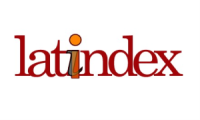InGuia: An incentive to the tourism development in Manaus with a Digital Platform supports
Abstract
Brazil offers to the national and international tourists a wide range of options, being the natural areas, the most popular tourist product, a combination of ecotourism with recreation, sun and beach tourism, adventure tourism, and historic cultural tourism. Creating richness and growing the consumption and production of the area. Tourism has great meaning to a city like Manaus, who still shows potential problems to your utilization, among them is mentioned the lack of disclosure, precarious infrastructure, security problems, and the missing of qualification guides to prest assistance to the city visitors. It is Presented the platform and previous results, (InGuia) who can contribute to the problem resolution on finding specialized professionals to prest guide service in the local tours and provides rich and trust information, all completed and updated about all the tourism richness of a place all of this in several languages, which is extremely important knowing how is the variety of nationalities that visit Brazil. Since Manaus Tourism has great potential, with a huge variety of places to visit, we present how Manaus loses all this potential with a bad experience given to the tourist caused by the missing of defined and actualized information. Besides that, it is also difficult for the ones who work directly with tourism, as in the case of the Guides, who suffer to create contact with the tourist. InGuia comes as a purpose to solve these problems, given to the tourist the opportunity to know better the place where he goes to visit, bringing precise information, easy to understand, and easy access. In addition to creating opportunities for Guides to reposition themselves in the market, allowing a better view of the service he proposes. In that way, InGuia helps both tourists who wish to have a better tourist experience, traveling with more convenience and practicality, now that they know they can easily find the information they need, as well as supporting the Guides, allowing the easy exposure of their services.
Keywords: Tourism, Information, development.
Downloads
References
J. A. Andrade. “O Turismo Científico Na Amazônia: Um Estudo Das Oportunidades, Necessidades E Potencialidades Para A Cidade De Manaus”, UFAM, (2008). Pag 17. CDU 379.85(811)(043.3). Manaus.
G. O. da Silva. “Patrimônios Históricos Na Amazônia: História, Memória, Turismo E Preservação”, (2018). Pag 94.
AMAZONASTUR. “Aproximadamente 286 Mil Turistas Desembarcaram No Amazonas, Em 2019, Aponta”. 9 De Julho De 2019 [Online], Available: http://www.amazonastur.am.gov.br/aproximadamente-286-mil-turistas-desembarcaram-no-amazonas-em-2019-aponta-amazonastur/
OBSERVATUR/UEA, “Fluxo Turístico No Amazonas e Manaus (2007 – 2018)”. 2019. [Online], Available: http://observatur.uea.edu.br/indicadores/
W. K. de Oliveira, L. P. Garcia and E. Duarte, “A vigilância em saúde na Copa do Mundo no Brasil”. (2014). Epidemiol. Serv. Saúde vol.23 no.2 Brasília Apr./June 2014, ISSN 2237-9622.
M. Cho and S. Jang, “Information Value Structure For Vacation Travel. Journal Of Travel Research”, (2008). 47(1), 72-83.
J. Rossi and C. M.Q. Ramosm, “A Relevância Do Uso De Smartphones Durante A Experiência Turística”, Rev.Tur., Visão E Ação, (2019), V 21, N 3.
L. M. Filho, J. De Oliveira Batista, A. Do Nascimento Barbosa Cacho, A. L. Vieira Soares, “Aplicativos Móveis E Turismo: Um Estudo Quantitativo Aplicando A Teoria Do Comportamento Planejado”. (2017). Doi:10.18226/21789061.V9i2p179 Project: E-tourism.
A. S. Guimarães and M. P. Borges, “E-turismo: Internet E Negócios Do Turismo”. (2008). São Paulo: Cengage Learning. Isbn-10: 8522106436, Isbn-13: 9788522106431.
J. A. Andrade, “O Turismo Científico Na Amazônia: Um Estudo Das Oportunidades, Necessidades E Potencialidades Para A Cidade De Manaus”, Ufam, (2008). 141 F. Pag 17.
FECOMERCIO/IFPEAM, “Comportamento Do Turismo Na Região Metropolitana De Manaus”. (2019). Relatório Mensal Da Pesquisa Do Comportamento Do Turismo Na Região Metropolitana De Manaus, Ano 2019 - N° 07.
AMAZONASTUR, “Amazonastur Registra Aumento De 8,53% No Número De Prestadores Regularizados”, (2020). [Online], Available: http://www.amazonastur.am.gov.br/amazonastur-registra-aumento-de-853-no-numero-de-prestadores-regularizados/
C. R. Pereira, “Construindo Apis Rest Com Node.Js”. (2016). Casa Do Código.2016. ISBN:978-85-5519-150-3.
A. Freeman, “Essential Typescript: From Beginner To Pro.Apress”. (2019). DOI 10.1007/978-1-4842-4979-6.
D. Sebastien, A. Georges, “Learn Typescript 3 By Building Web Applications: Gain A Solid Understanding Of Typescript, Angular”. (2019). Vue, React, And Nestjs. Packt. 2019. Pag 666. ISBN 9781789615869.
V. Carvalho, “Mysql: Comece Com O Principal Banco De Dados Open Source Do Mercado”. (2015). Casa Do Código. ASIN: B019P83LYY.
C. C. Aggarwal, “Recommender Systems”. (2016). Springer. ISBN 978-3-319-29659-3.
S. C. Cazella ,J. V. Drumm, J. L. V. Barbosa, “Um Serviço Para Recomendação De Artigos Científicos Baseado Em Filtragem De Conteúdo Aplicado A Dispositivos Móveis”.(2010) . Revista Novas Tecnologias na Educação. ISSN 1679-1916 V. 8 Nº 3. Pag 3.
A. Fedosejev, “React.Js Essentials”. (2015). Packt. 2. ISBN 9781783551620.
L. H. Marinho, “Iniciando Com Flutter Framework: Desenvolva Aplicações Móveis No Dart Side”.(2020). Casa Do Código. ISBN:978-65-86110-26-5.

This work is licensed under a Creative Commons Attribution 4.0 International License.











